Do consumers want to catch more fish in topwaters (especially bass) with a new lure? Then, frog lures will be right up their alley. Fishing with a frog lure is a fun and surprisingly effective method for catching bass and other frog-eating species.
However, choosing a frog lure that works can get tricky fast. But don’t worry. This article will cover everything businesses need to know when selecting frog lures that help consumers catch more fish effectively.
Table of Contents
A brief look at the fishing lure market
What is frog fishing?
What should businesses consider before choosing frog lures?
Rounding up
A brief look at the fishing lure market
Experts placed the fishing lure market value at US$3.96 billion in 2023. They also predict it will grow to US$6.57 billion by EoY (end of the year) 2033, at a healthy 5.2% compound annual growth rate (CAGR). The market is growing fast due to the rising popularity of recreational fishing, growing demand for seafood, and increasing disposable income.
Asia-Pacific is the most profitable region for fishing lures, with China and India emerging as highly lucrative markets. Europe is also pretty profitable for fishing lures, as experts say demand will rise at a 4.7% CAGR over the forecast period.
Beyond the market stats, frog lures have attracted more attention in 2024. First, they dropped from their 2023 8,100 average searches to 4,400 in the first half of 2024. However, they have registered a 110% increase to 14,800 searches in the first two months of 2024’s third quarter (July and August).
What is frog fishing?
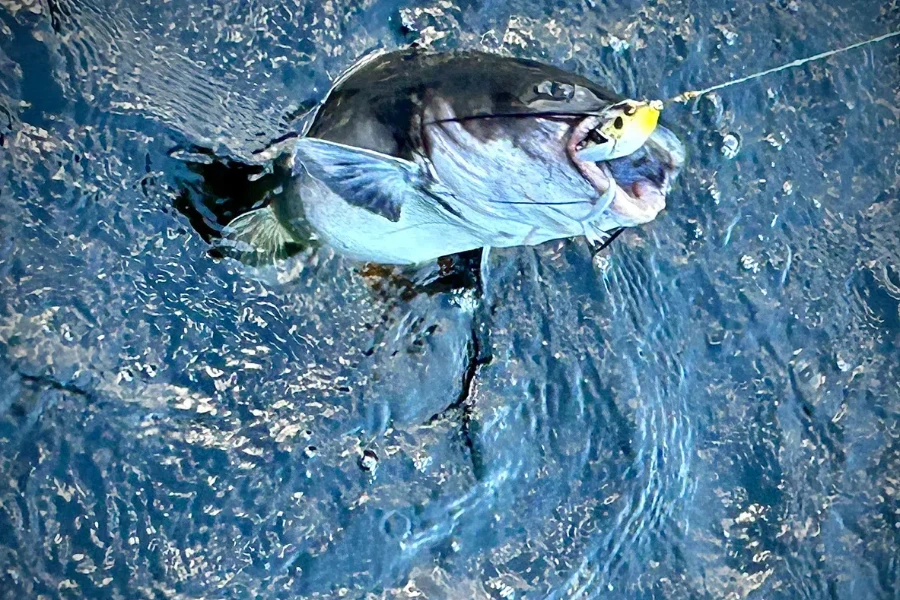
Frog lures are the go-to for people who primarily fish for largemouth bass and pikes. This topwater bait is popular because fishermen can throw it anywhere, anytime, and have a high chance of catching fish. With frog lures, consumers can catch big bass above grass mats, emergent vegetation, lily pads, boat docks, heavy cover, and everything in between.
What should businesses consider before choosing frog lures?
1. Type of frog lure
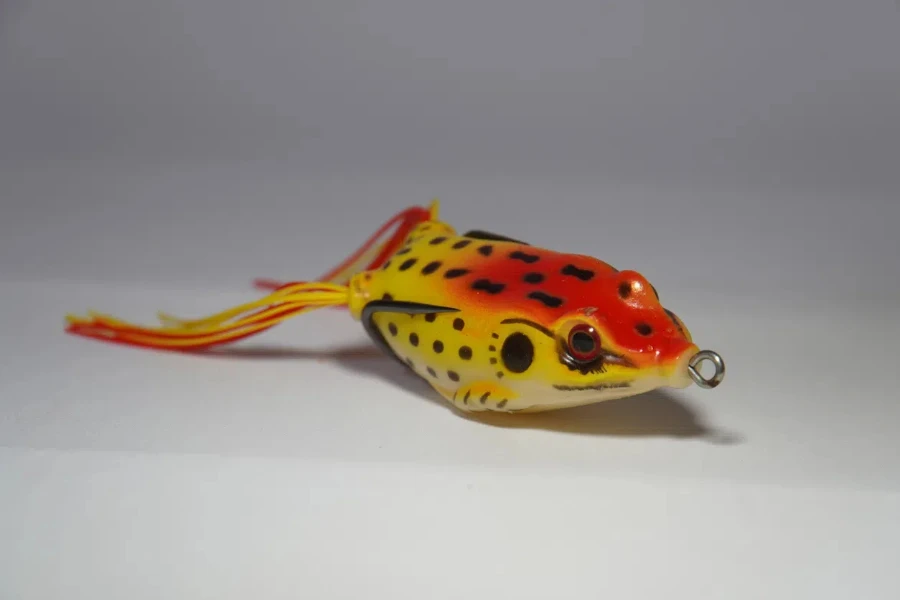
The most common frog lure anglers use is the hollow-body frog. These frog lures have a unique, hollow structure that helps them float on the water’s surface like some frog species. Manufacturers also make two hollow-body topwater frog lures: walking or popping mouths.
Popping mouth hollow body frog lures have designs that drag the water during retrieval, creating a wake that mimics movement and makes more noise, attracting more fish. For this reason, many anglers prefer popping mouths over walking options, especially in windy conditions.
The second option businesses can stock is the soft-bodied frog lure—some anglers call it the “toad.” Typically, these lures feature soft plastics, so business buyers can also sell separate hooks for use with them. Additionally, soft-bodied frogs are ideal for areas with less dense vegetation. They also work well with the steady retrieve technique, allowing their tails to create noise and movement in the water.
2. Lure color
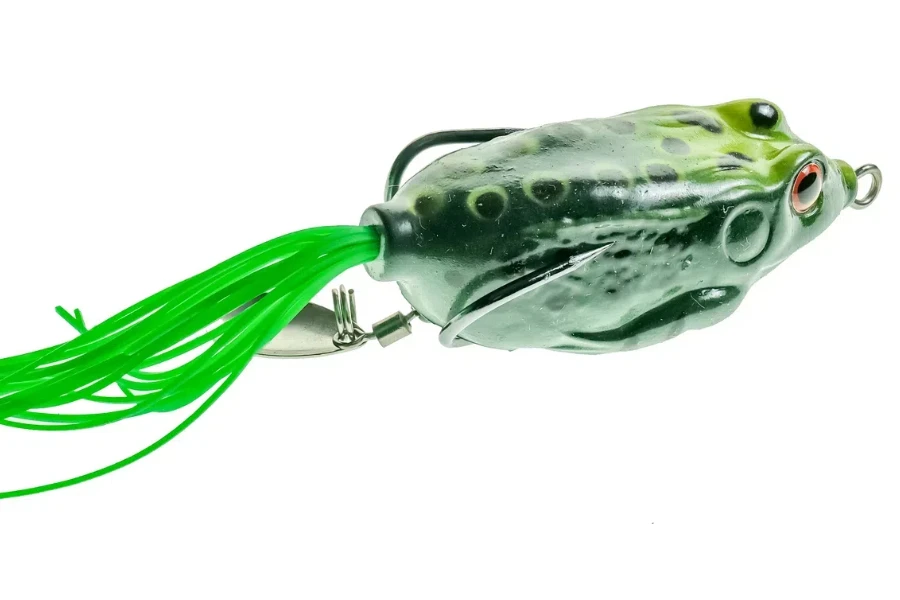
In bass fishing, “keep it simple” is often the best advice, especially if businesses want to sell more lures. It’s easy for brands to overwhelm consumers with endless variations of baits and colors. Still, simplicity usually yields better results—so it makes sense that many will go for simple colors.
Anglers usually make their bass fishing experience much easier with three main colors: black, white, and green/yellow. Black will attract consumers looking for lures to use in muddy or stained water or when there’s an overcast sky, while white is the go-to for those heading for clear waters or areas during the shad spawn. Green/yellow is a good choice when anglers have nothing specific in mind.
Note: These colors should be on the lure’s belly, as that’s what fish will see when targeting them.
3. Size and weight
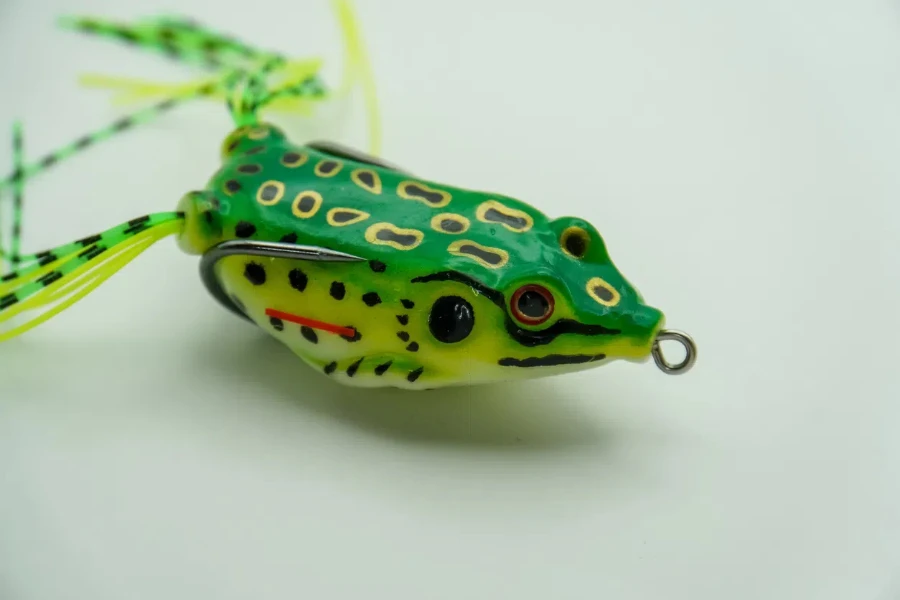
A frog lure’s size and weight are key to how successful anglers will be at catching bass. Larger frogs, typically between 4 and 6 inches, attract monster bass, especially in open water. However, consumers may find navigating through dense areas like lily pads and weeds more challenging. On the other hand, smaller frogs, around 2 to 3 inches in length, are more agile and often work well in shallow water or when bass chase smaller prey.
Similarly, heavier frogs are better for casting into thick cover and fishing in windy conditions. They can cut through heavy vegetation more efficiently with lower chances of getting tangled. In contrast, lighter frogs are more delicate and will respond better to subtle movements, which might be what anglers need to tempt bass in certain situations.
4. Hook design
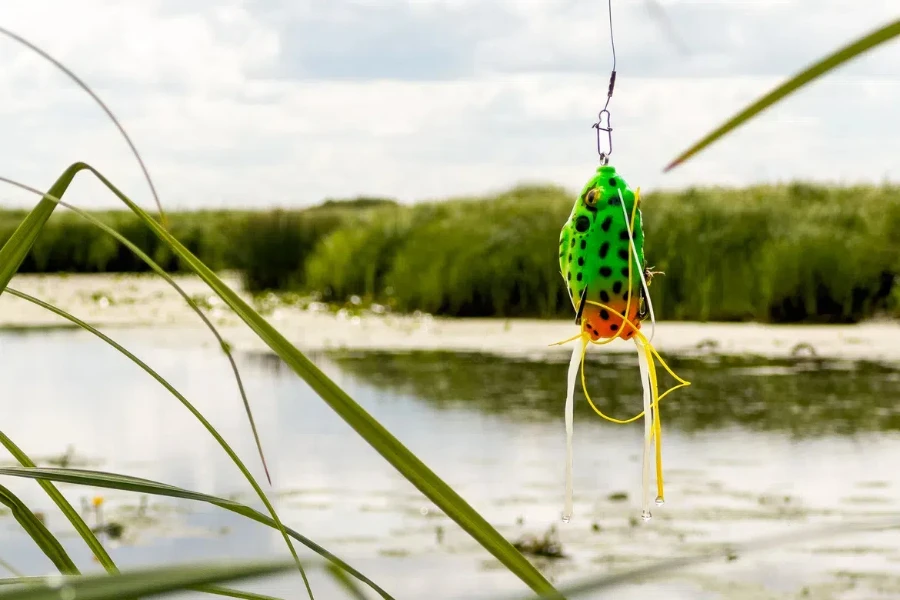
Anglers also pay attention to the frog lure’s hook design. It’s what improves hookup rates while avoiding snags. Most frog lures come with weedless hooks, which can glide through vegetation without getting caught. These hooks are usually hidden within the lure’s body, helping them move through cover more smoothly.
However, the level of hook exposure can differ. Some frog lures have partially exposed hooks, which can increase the likelihood of hooking a bass when it strikes. But this also raises the risk of snagging. On the other hand, lures with fully concealed hooks are less likely to snag, but may have less success hooking fish.
So, when choosing a frog lure, businesses must consider the type of cover anglers will be fishing in and how they like to do it. If they constantly deal with thick vegetation, a lure with fully concealed hooks will be their best bet at avoiding snags. However, a lure with partially exposed hooks could be more effective if consumers are after aggressive bass in open water.
5. Legs
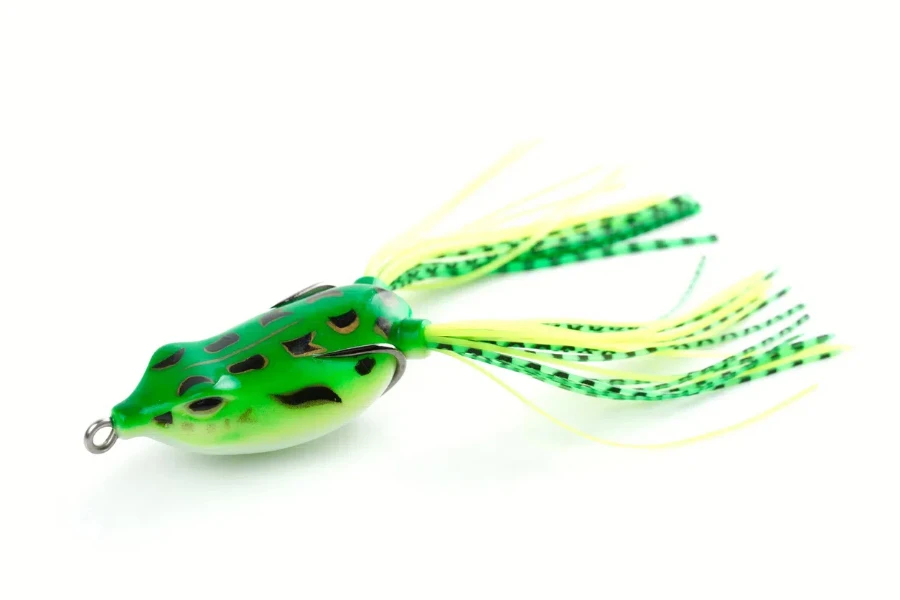
Legs are one of the main parts of the lure that attracts the fish. That’s why businesses must choose them carefully when stocking frog lures. More importantly, the material and design of the legs can change how the lure moves in the water and how appealing it is to fish.
Many anglers prefer soft, flexible legs because they resemble a real frog’s movement. In addition to their natural look, soft, flexible legs respond well to subtle movements. In contrast, some frog lures have kicking legs that create extra splash and draw more attention. Since leg designs vary, anglers are usually open to experimentation to see their effectiveness in different fishing environments.
Rounding up
Frog fishing is a great way to target largemouth bass, monster pike, and other frog-eating species—and anglers need super-effective frog lures to catch more game. Consumers new to frog fishing will also need a heavy power rod and a floating line (between 50 lb and 65 lb), so businesses can get more selling opportunities with this gear. Business buyers can follow the tips in this guide to add fast-selling frog lures to their stores that help consumers catch more topwater fish.
The Alibaba Reads sports section is packed with more insightful topics like this. So don’t forget to subscribe for all the latest info and trends.



